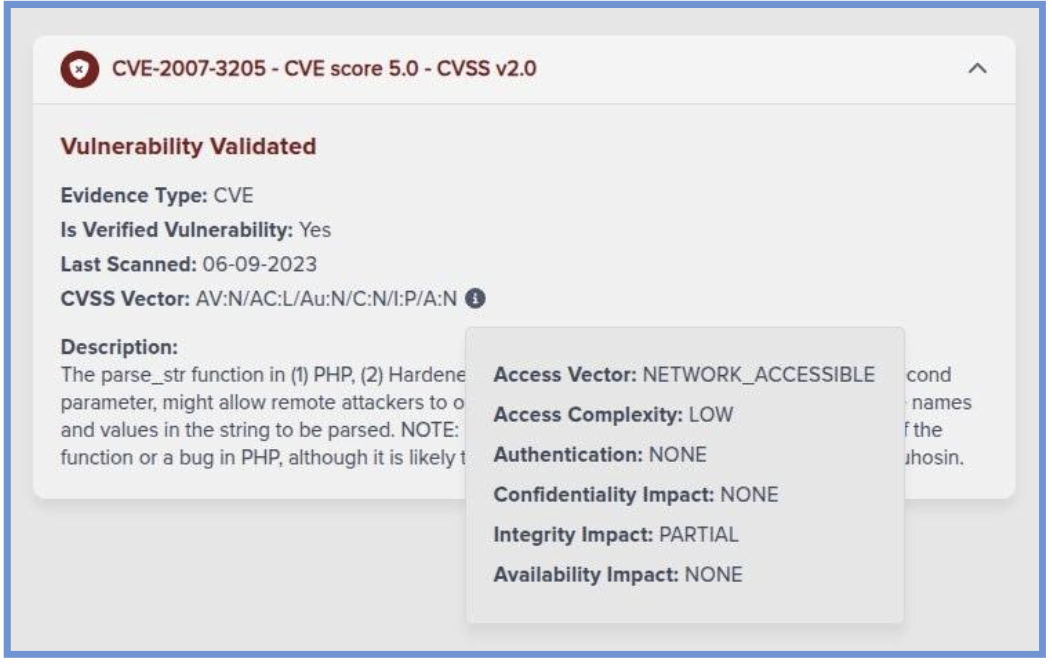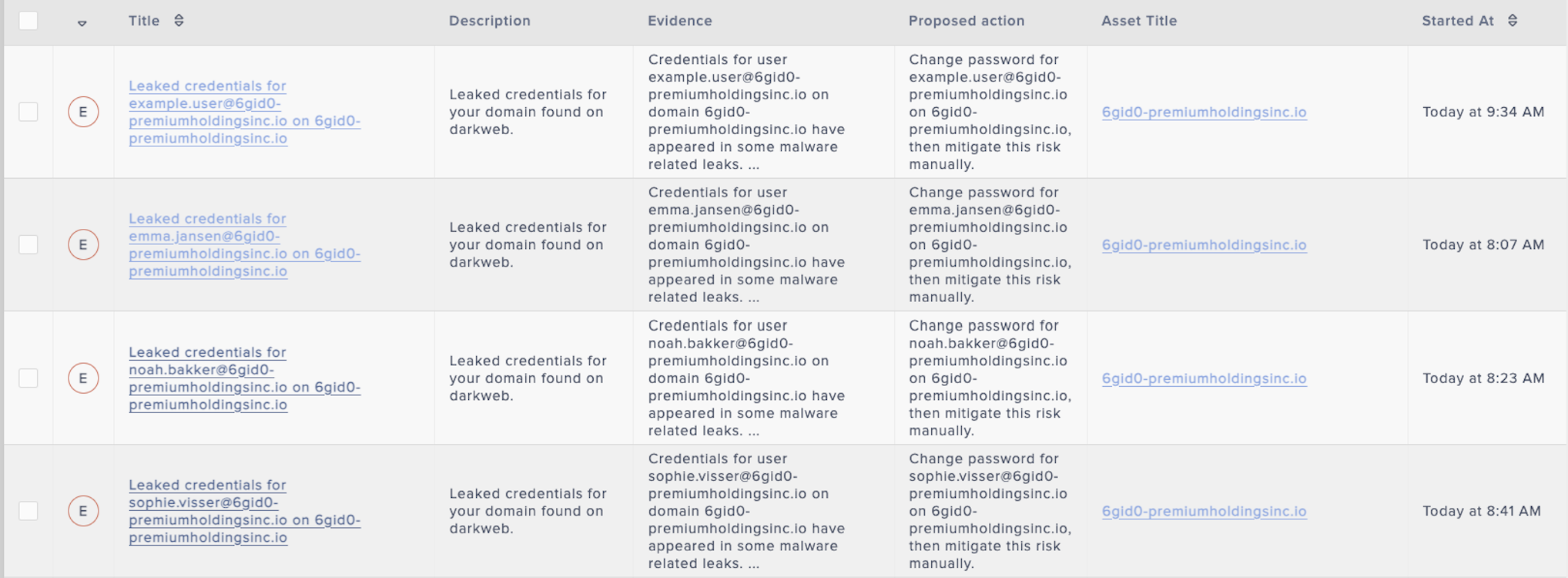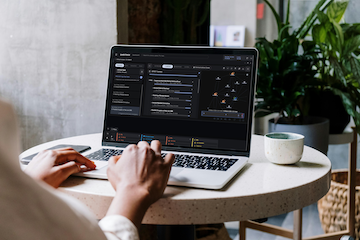Why exposure management needs to evolve beyond scans and checklists
The modern attack surface changes faster than most security programs can keep up. New assets appear, environments change, and adversaries are increasingly aided by automation and AI. Traditional approaches like periodic scans, static inventories, or annual pen tests are no longer enough. Without a formal exposure program, many businesses are flying blind, unaware of where the next threat may emerge.
This is where Continuous Threat Exposure Management (CTEM) becomes essential. Introduced by Gartner, CTEM helps organizations continuously assess, validate, and improve their exposure to real-world threats. It reframes the problem: scope your true attack surface, prioritize based on business impact and exploitability, and validate what attackers can actually do today, not once a year.
With two powerful new capabilities, Darktrace / Attack Surface Management helps organizations evolve their CTEM programs to meet the demands of today’s threat landscape. These updates make CTEM a reality, not just a strategy.
Too much data, not enough direction
Modern Attack Surface Management tools excel at discovering assets such as cloud workloads, exposed APIs, and forgotten domains. But they often fall short when it comes to prioritization. They rely on static severity scores or generic CVSS ratings, which do not reflect real-world risk or business impact.
This leaves security teams with:
- Alert fatigue from hundreds of “critical” findings
- Patch paralysis due to unclear prioritization
- Blind spots around attacker intent and external targeting
CISOs need more than visibility. They need confidence in what to fix first and context to justify those decisions to stakeholders.
Evolving Attack Surface Management
Attack Surface Management (ASM) must evolve from static lists and generic severity scores to actionable intelligence that helps teams make the right decision now.
Joining the recent addition of Exploit Prediction Assessment, which debuted in late June 2025, today we’re introducing two capabilities that push ASM into that next era:
- Exploit Prediction Assessment: Continuously validates whether top-priority exposures are actually exploitable in your environment without waiting for patch cycles or formal pen tests.
- Deep & Dark Web Monitoring: Extends visibility across millions of sources in the deep and dark web to detect leaked credentials linked to your confirmed domains.
- Confidence Score: our newly developed AI classification platform will compare newly discovered assets to assets that are known to belong to your organization. The more these newly discovered assets look similar to assets that belong to your organization, the higher the score will be.
Together, these features compress the window from discovery to decision, so your team can act with precision, not panic. The result is a single solution that helps teams stay ahead of attackers without introducing new complexities.
Exploit Prediction Assessment
Traditional penetration tests are invaluable, but they’re often a snapshot of that point-in-time, are potentially disruptive, and compliance frameworks still expect them. Not to mention, when vulnerabilities are present, teams can act immediately rather than relying solely on information from CVSS scores or waiting for patch cycles.
Unlike full pen tests which can be obtrusive and are usually done only a couple times per year, Exploit Prediction Assessment is surgical, continuous, and focused only on top issues Instead of waiting for vendor patches or the next pen‑test window. It helps confirm whether a top‑priority exposure is actually exploitable in your environment right now.
For more information on this visit our blog: Beyond Discovery: Adding Intelligent Vulnerability Validation to Darktrace / Attack Surface Management

Deep and Dark Web Monitoring: Extending the scope
Customers have been asking for this for years, and it is finally here. Defense against the dark web. Darktrace / Attack Surface Management’s reach now spans millions of sources across the deep and dark web including forums, marketplaces, breach repositories, paste sites, and other hard‑to‑reach communities to detect leaked credentials linked to your confirmed domains.
Monitoring is continuous, so you’re alerted as soon as evidence of compromise appears. The surface web is only a fraction of the internet, and a sizable share of risk hides beyond it. Estimates suggest the surface web represents roughly ~10% of all online content, with the rest gated or unindexed—and the TOR-accessible dark web hosts a high proportion of illicit material (a King’s College London study found ~57% of surveyed onion sites contained illicit content), underscoring why credential leakage and brand abuse often appear in places traditional monitoring doesn’t reach. Making these spaces high‑value for early warning signals when credentials or brand assets appear. Most notably, this includes your company’s reputation, assets like servers and systems, and top executives and employees at risk.

What changes for your team
Before:
- Hundreds of findings, unclear what to start with
- Reactive investigations triggered by incidents
After:
- A prioritized backlog based on confidence score or exploit prediction assessment verification
- Proactive verification of exposure with real-world risk without manual efforts
Confidence Score: Prioritize based on the use-case you care most about
What is it?
Confidence Score is a metric that expresses similarity of newly discover assets compared to the confirmed asset inventory. Several self-learning algorithms compare features of assets to be able to calculate a score.
Why it matters
Traditional Attack Surface Management tools treat all new discovery equally, making it unclear to your team how to identify the most important newly discovered assets, potentially causing you to miss a spoofing domain or shadow IT that could impact your business.
How it helps your team
We’re dividing newly discovered assets into separate insight buckets that each cover a slightly different business case.
- Low scoring assets: to cover phishing & spoofing domains (like domain variants) that are just being registered and don't have content yet.
- Medium scoring assets: have more similarities to your digital estate, but have better matching to HTML, brand names, keywords. Can still be phishing but probably with content.
- High scoring assets: These look most like the rest of your confirmed digital estate, either it's phishing that needs the highest attention, or the asset belongs to your attack surface and requires asset state confirmation to enable the platform to monitor it for risks.
Smarter Exposure Management for CTEM Programs
Recent updates to Darktrace / Attack Surface Management directly advance the core phases of Continuous Threat Exposure Management (CTEM): scope, discover, prioritize, validate, and mobilize. The new Exploit Prediction Assessment helps teams validate and prioritize vulnerabilities based on real-world exploitability, while Deep & Dark Web Monitoring extends discovery into hard-to-reach areas where stolen data and credentials often surface. Together, these capabilities reduce noise, accelerate remediation, and help organizations maintain continuous visibility over their expanding attack surface.
Building on these innovations, Darktrace / Attack Surface Management empowers security teams to focus on what truly matters. By validating exploitability, it cuts through the noise of endless vulnerability lists—helping defenders concentrate on exposures that represent genuine business risk. Continuous monitoring for leaked credentials across the deep and dark web further extends visibility beyond traditional asset discovery, closing critical blind spots where attackers often operate. Crucially, these capabilities complement, not replace, existing security controls such as annual penetration tests, providing continuous, low-friction validation between formal assessments. The result is a more adaptive, resilient security posture that keeps pace with an ever-evolving threat landscape.
If you’re building or maturing a CTEM program—and want fewer open exposures, faster remediation, and better outcomes, Darktrace / Attack Surface Management’s new Exploit Prediction Assessment and Deep & Dark Web Monitoring are ready to help.
- Request a free 30-day trial to experience how Darktrace / Attack Surface Management works alongside Darktrace / NETWORK
- Want a more in-depth look at how Exploit Prediction Assessment functions? Read more here
Committed to innovation
These updates are part of the broader Darktrace release, which also included:
1. Major innovations in cloud security with the launch of the industry’s first fully automated cloud forensics solution, reinforcing Darktrace’s leadership in AI-native security.
2. Darktrace Network Endpoint eXtended Telemetry (NEXT) is revolutionizing NDR with the industry’s first mixed-telemetry agent using Self-Learning AI.
3. Improvements to our OT product, purpose built for industrial infrastructure, Darktrace / OT now brings dedicated OT dashboard, segmentation-aware risk modeling, and expanded visibility into edge assets and automation protocols.
Join our Live Launch Event
When?
December 9, 2025
What will be covered?
Join our live broadcast to experience how Darktrace is eliminating blind spots for detection and response across your complete enterprise with new innovations in Agentic AI across our ActiveAI Security platform. Industry leaders from IDC will join Darktrace customers to discuss challenges in cross-domain security, with a live walkthrough reshaping the future of Network Detection & Response, Endpoint Detection & Response, Email Security, and SecOps in novel threat detection and autonomous investigations.
.jpeg)






















.jpg)
